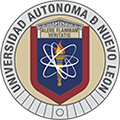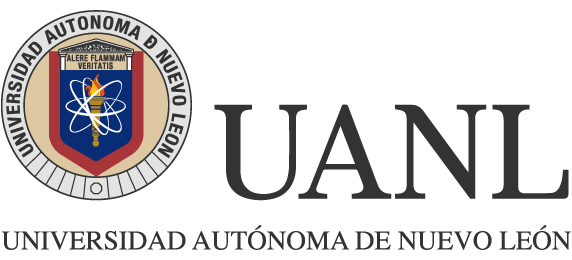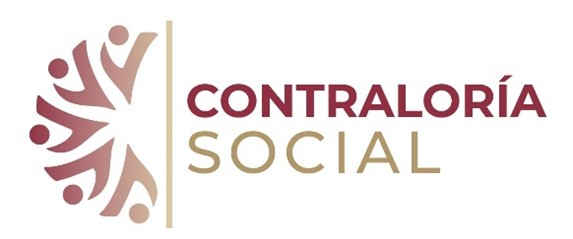Compartir:
Héctor Noé Fernández Escamilla
Líneas de investigación
Mi linea de investigación es la simulación de materiales mediante la Teoría del Funcional de la Densidad (DFT) implementado en diversos paquetes computacionales, tales como: Quantum ESPRESSO, VASP, GPAW, Gammes. Estudio la reactividad; propiedades electrónicas, magnéticas y estructurales de la materia, para dar explicaciones a reacciones químicas que ocurren en procesos catalíticos, procesos de deposición por capa atómica, detección y reducción de moléculas tóxicas en la superficie de los materiales.
Otras áreas de estudio son las interfaces y superficies, para el diseño de nuevos sistemas que puedan ser utilizados en dispositivos de tunelamiento electrónico; la magnetización en sistemas, debido a deformaciones estructurales o dopaje y el estudio de los efectos plasmónicos mediante la simulación de sistemas excitados.
Además de trabajar con sistemas bidimensionales y reacciones de superficie, también trabajo con sistemas unidimensionales, como nanocintas o nanotubos de diversos materiales y sistemas cero-dimensionales como puntos cuánticos para su aplicación en procesos catalíticos.
Aportaciones en investigación y académicas
• Obtención del grado de Doctor con la mención Summa Cum Laude, 2018.
• Desde enero del 2019 ingresé al Sistema Nacional de Investigadores S.N.I. nivel 1, en el área 1
• Durante el año 2019, fui profesor-investigador invitado por el Dr. Noboru Takeuchi Tan al Centro de Nanociencias y Nanotecnología (CNyN) de la Universidad Nacional Autónoma de México (UNAM).
• De marzo del 2020 a Febrero 2022 realice a una estancia posdoctoral DGAPA-UNAM bajo la dirección del Dr. Takeuchi, haciendo investigación e impartiendo clases a nivel licenciatura y posgrado.
• Soy miembro del Laboratorio Virtual de Modelado de Materiales (LVMM-CNyN-UNAM).
• Tengo una publicación en la revista Advanced Energy Materials, con Factor de Impacto 29.368, articulo titulado “Understanding the Selectivity of the Oxygen Reduction Reaction at the Atomistic Level on Nitrogen‐Doped Graphitic Carbon Materials.
• Uno de las investigaciones en las que colaboré fue seleccionado como portada de revista en Applied Surface Science (2019 factor de impacto 5.155) con la publicación DFT study of the dimethyl sulfoxide reduction on silicene.
A la fecha cuento con 28 artículos:
28. Pt2MnGa (001) surface stability and its effect on the magnetic and electronic properties: A DFT study. revista: Materials Today Communications. quartil:Q2
27. Electronic and optical properties of the buckled and puckered phases of phosphorene and arsenene. Autores: Jose Mario Galicia Hernandez, HN Fernandez-Escamilla, J Guerrero-Sanchez, Noboru Takeuchi. Año: 2022.
26. Adsorption and Reactivity of Chiral Modifiers in Heterogeneous Catalysis: 1-(1-Naphthyl) ethylamine on Pt Surfaces. año: 2022, volumen: 12 , páginas:10514-10521, revista: ACS Catalysis., quartil: Q1
25. Self-energy corrected band-gap tuning induced by strain in the hexagonal boron phosphide monolayer; revista: Computational Materials Science. quartil: Q1
24. Controlling the magnetic alignment at the MnGa/Co2MnSi interface: a DFT study; revista: Journal of Magnetism and Magnetic Materials, volumen: 547, páginas: 168936, quartil.
23. The effect of shape and size in the stability of triangular Janus MoSSe quantum dots. revista: Scientific reports, volumen: 11, páginas: 1-11, quartil:
22. Hexagonal boron phosphide monolayer exfoliation induced by arsenic incorporation in the BP (1 1 1) surface: A DFT study; revista: Applied Surface Science, volumen: 538, páginas: 148163. quartil Q1.
21. First-principles study of the atomic layer deposition of ZnO on carboxyl functionalized carbon nanotubes: the role of water molecules; revista: Physical Chemistry Chemical Physics. quartil: Q1.
20. First-principles studies of the strain-induced band-gap tuning in black phosphorene; revista: Journal of Physics : Condensed Matter. volumen: 33, no 17, páginas: 175502, quartil Q1
19. Understanding the Role of Oxygen Vacancies in the Stability of ZnO(0001)-(1 × 3) Surface Reconstructions; revista: Journal of Physical Chemistry C, volumen: 125(14), páginas: 7980-7989. quartil Q1.
18. Understanding the Selectivity of the Oxygen Reduction Reaction at the Atomistic Level on Nitrogen‐Doped Graphitic Carbon Materials; revista: Advanced Energy Materials, páginas: 2002459. quartil Q1.
17. Mn5Ge3 ultra-thin films on GaAs (111) B substrates: influence of initial growth conditions; revista: Superlattices and microstructures. volumen: 148, páginas: 106745.
16. Structural, electronic, and magnetic properties of the CoGa (0 0 1) surface and the L10 MnGa/CoGa interface: A density functional theory study; revista: Applied Surface Science, volumen: 504, páginas: 144332. quartil Q1.
15. Formaldehyde adsorption on a hydrogenated gallium nitride monolayer: A density functional theory study; revista: Applied Surface Science, año: 506, páginas:144944. quartil Q1.
14. The effect of strain on the structural and dynamical stability of hydrogenated penta-C2Ge: a density functional theory study; revista: Journal of Physics D: Applied Physics. quartil Q1.
13. Aldehyde trapping by self-propagating atom-exchange reactions on a gallium nitride monolayer: role of the molecule complexity; revista: New Journal of Chemistry, volumen: 44(29), páginas: 12843-12849. quartil Q1.
12. Adsorption and diffusion mechanisms of silver ad-atoms on Ag and Cu (110) surfaces: A first principles study; revista: Materials Today Communications, volumen: 25, páginas: 101461. quartil Q2.
11. Structural properties and thermal stability of multi-walled black phosphorene nanotubes and their operation as temperature driven nanorotors; revista: Nanoscale, volumen:12(35), páginas:18313-18321. quartil Q1.
10. Structural transition induced by compression and stretching of puckered arsenene nanotubes; revista: Physical Chemistry Chemical Physics, volumen: 21(40), páginas: 22467-22474, quartil Q1.
9. Adsorption and dissociation of NO2 on silicene; revista: Applied Surface Science, volumen: 498, páginas: 143854. quartil Q1.
8. Formaldehyde adsorption on a hydrogenated aluminum nitride monolayer: A self-propagated reaction; revista: Computational and Theoretical Chemistry, volumen: 1159, páginas: 18-22. quartil Q2.
7. Structural and Electronic Properties of Double-Walled Black Phosphorene Nanotubes: A Density Functional Theory Study; revista: The Journal of Physical Chemistry C, volumen: 123(12), páginas: 7217-7224. quatil Q1.
6. Adsorption of dimethyl sulfoxide on blue phosphorene; revista: Surface Science, volumen: 680, páginas: 88-94. quartil Q1.
5. Puckered arsenene single-walled nanotubes: Stability, geometry, and electronic properties; revista: Computational Materials Science, volumen 169, páginas: 109108. quartil Q1.
4. DFT study of the dimethyl sulfoxide reduction on silicene; revista: Applied Surface Science, volumen: 467, páginas: 261-267. quatil Q1.
3. Chiral penta-graphene nanotubes: Structure, bonding and electronic properties; revista: Computational and Theoretical Chemistry, volumen: 1108, páginas: 70-75. quartil Q2.
2. Doped penta-graphene and hydrogenation of its related structures: a structural and electronic DFT-D study; revista: Physical Chemistry Chemical Physics, volumen: 18, no 23, páginas: 15505-15509. quartil Q1.
1. Chiral phosphorus nanotubes: structure, bonding, and electronic properties; revista: Physical Chemistry Chemical Physics, volumen: 18, no 18, páginas: 12414-12418. quartil Q1.
Responsable: Dirección de Investigación





